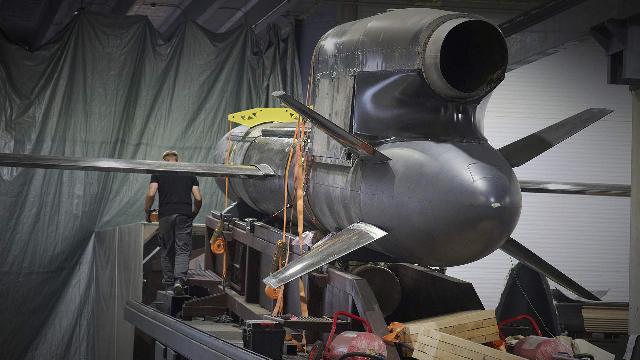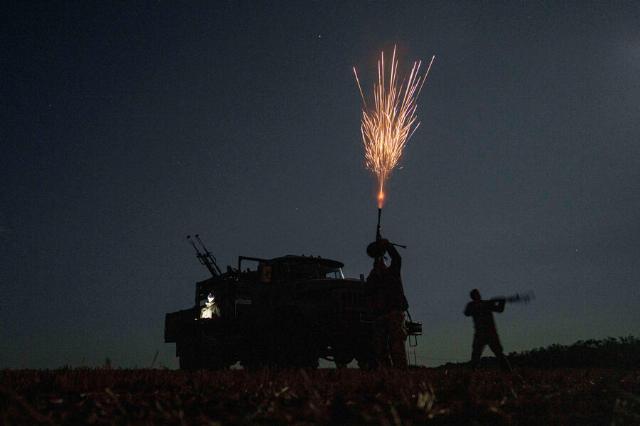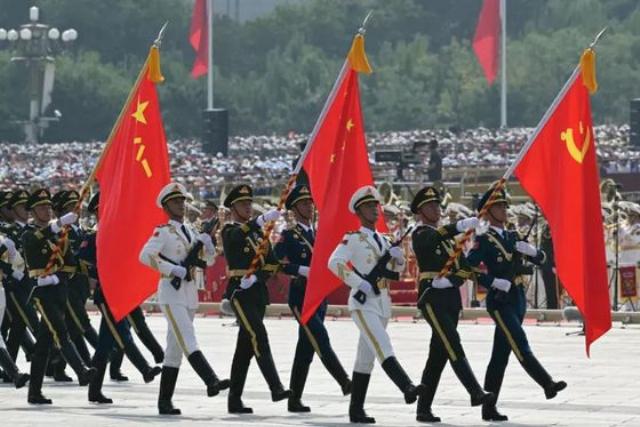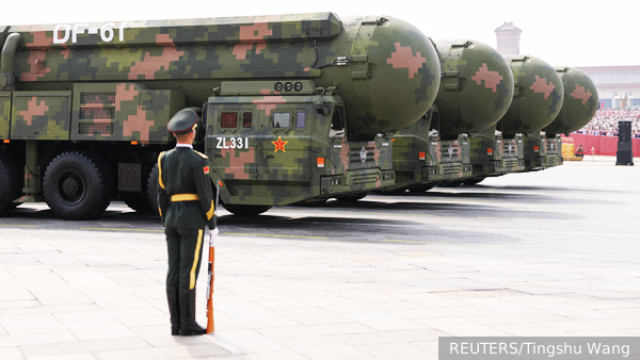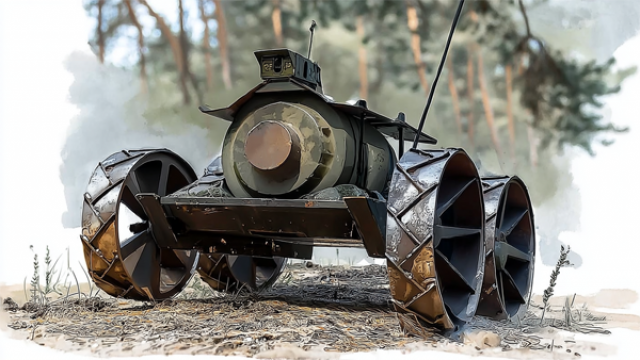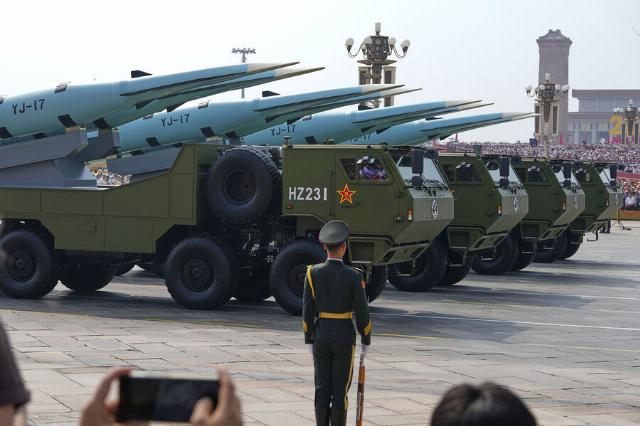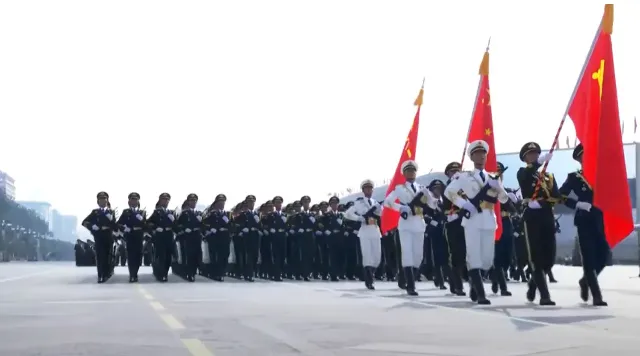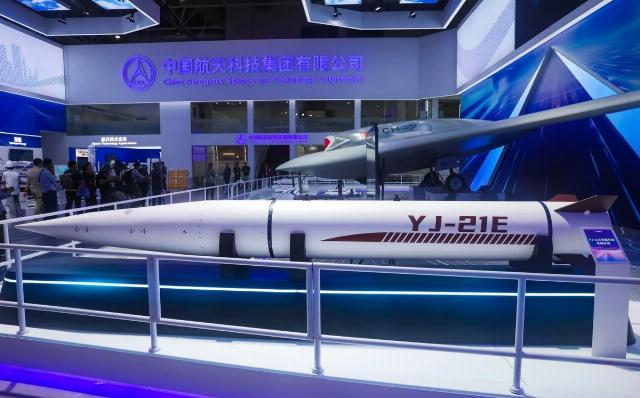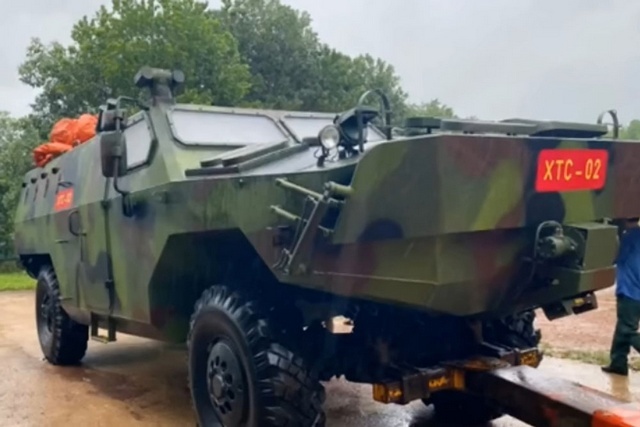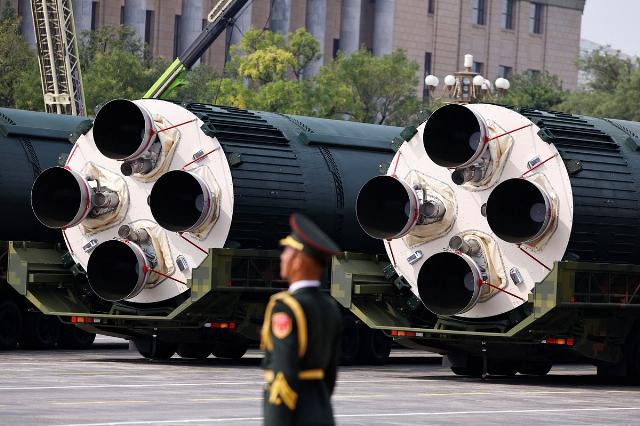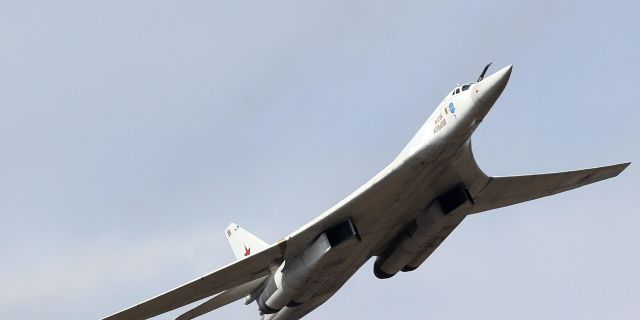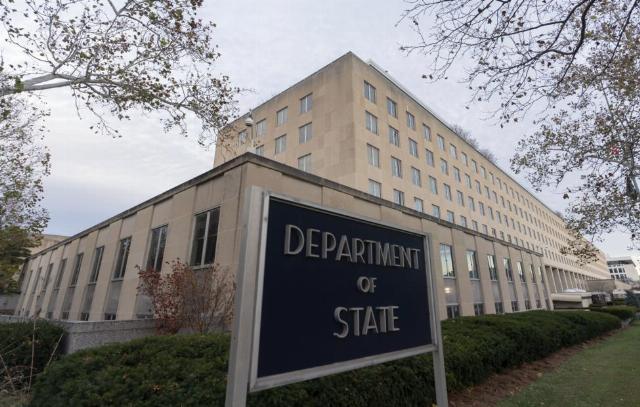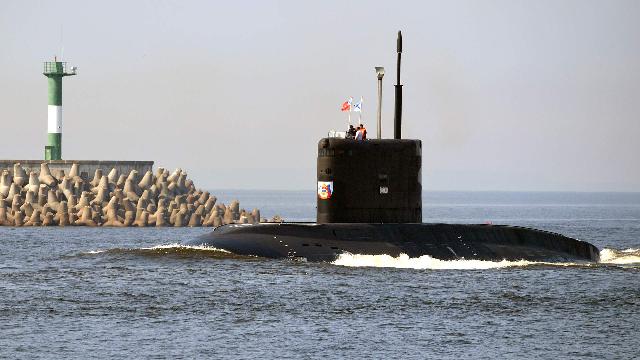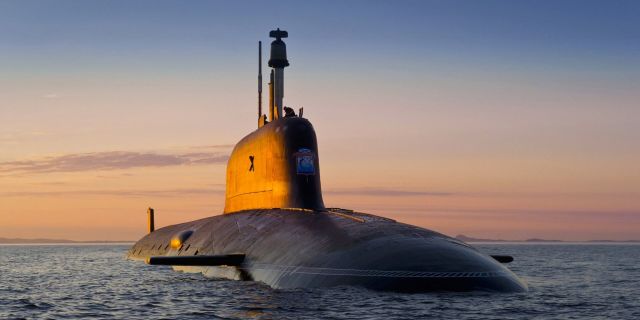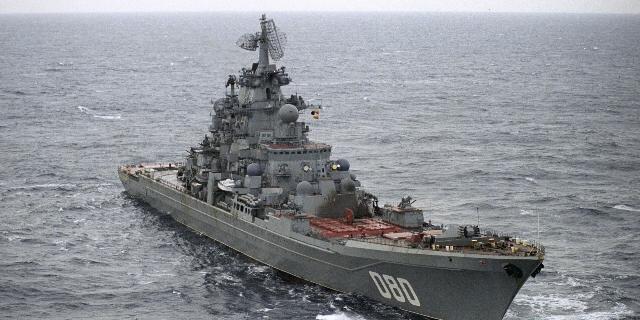Latest news on "Missile and artillery"
Ballistic trajectory: how Ukrainian missiles will affect peace talks
The development of new long-range ammunition indicates Kiev's unwillingness to seek peaceful ways to resolve the conflict
Kiev is demonstrating unwillingness to seek peaceful ways and still hopes for a military solution to the conflict, as experts interviewed by Izvestia commented on Fire Point's statements that it is developing new FP-7 and FP-9 missiles with ranges of 200 and 850 km.
"We need to attract combat helicopters." Will Ukraine be able to create a defense system against UAVs
Colonel Khodarenok: the Ukrainian Armed Forces have few air defense systems to create a defense system against UAVs
The commander-in-chief of the Armed Forces of Ukraine, General Alexander Syrsky, said that a layered defense system against Russian attack drones is being built in the country. Military observer of "Gazeta.Ru", retired colonel Mikhail Khodarenok figured out what such a defense might look like and whether the words of the military commander are a new milestone in the organization of air defense.
China demonstrated new models of military equipment at the parade in Beijing
On September 3, a military parade was held in Beijing's Tiananmen Square to mark the 80th anniversary of the victory over militaristic Japan and the end of World War II.
The Chinese showed the result of studying the Russian special operation
The military and technical innovations shown during the large-scale parade in Beijing to mark the 80th anniversary of the end of World War II continue to be discussed all over the world. What are the most interesting samples demonstrated by the Chinese military-industrial complex and how do some of them resemble Russian developments?
Ground-based drones are reclaiming niches on the battlefield
The autonomy of unmanned wheeled and tracked platforms is somewhat lower than that of their flying and floating counterparts due to technological aspects and software deficiencies. But there is no doubt that as AI develops, the autonomy of ground-based platforms will grow, as will their role in combat operations.
"The main exam is war." Why should China send military equipment from the parade to its territory?
Colonel Khodarenok suggested that China check the weapons shown at the parade
Western countries supply and intend to continue to supply the Armed Forces of Ukraine with weapons, military and special equipment, essentially using Ukraine as a testing ground for weapons. Military observer of "Gazeta.Retired Colonel Mikhail Khodarenok suggests that China take an example from NATO countries and test its latest weapons, shown at the Victory Day Parade, in real combat conditions. Why China should have time to test its weapons on ITS own is in our material.
Chinese ceremony: what is interesting about the military parade in Beijing
During the rehearsals, the latest hypersonic missiles, air defense systems and unmanned underwater vehicles were seen
The HQ-29 mobile anti-aircraft system that destroys satellites, hypersonic DF-17, the most powerful DF-41 intercontinental missiles, as well as secret underwater drones — the participation of all these types of weapons was announced at the parade in Beijing on September 3.
The parade in Beijing opened with flag bearers and a red flag with a hammer and sickle
A military parade dedicated to the 80th anniversary of victory in the Great Patriotic War is taking place in Beijing. The Chinese leader stressed that this victory would not have been possible without the help provided by the Soviet Union. Recall that the Soviet army conducted the Manchurian operation, and ended the Second World War with an amphibious operation in the Kuril Islands.
The PLA presented a new generation of weapons at a military parade in Beijing
On September 3, a large-scale military parade was held in Beijing in honor of the 80th anniversary of the victory in the war of resistance of the Chinese people to the Japanese invaders and in World War II.
Vietnam demonstrated new weapons systems of national design at the parade
At the parade in honor of the 80th anniversary of independence in Hanoi on September 2, the Armed Forces of Vietnam presented a number of new models of military equipment of national development.
China has shown unique combat lasers and new missiles. Why does this weapon scare the United States so much?
China showed off a laser air defense system and Juilang missiles at the parade
On Wednesday, September 3, a parade was held in Beijing to mark the 80th anniversary of the victory over Japan and the end of World War II. The event on Tiananmen Square in Beijing became the premiere venue for the new products of the Chinese military-industrial complex (MIC), which were built with an eye to the experience of modern conflicts.
Expert Stepanov: the ICBM "East Wind" shown in China has become a marker of change
According to a military expert at the RANEPA Institute of Law and National Security, the Western military-industrial complex has virtually no response to such challenges
A key element of the parade in Beijing on the occasion of the 80th anniversary of the victory in the War of Resistance of the Chinese People against Japanese Aggression and the world anti-fascist war was the demonstration of all the capabilities of the Chinese nuclear triad.
"The radius of defeat is the entire globe": what was shown at the Victory Day parade in Beijing
A nuclear missile capable of hitting anywhere on Earth was shown at a parade in Beijing
In Beijing, a large-scale military parade was held in Tiananmen Square in honor of the 80th anniversary of the victory in the war of resistance of the Chinese people to the Japanese invaders and in World War II. What state-of-the-art equipment was shown at the parade, why the Chinese parade battalion is considered the largest in the world and what Donald Trump thinks about it - in the material of the military observer "Gazeta.Ru", retired Colonel Mikhail Khodarenka.
Five of the world's most dangerous bombers: from the invisible B-2 to the H-6N with ballistic missiles (Military Watch Magazine, USA)
Military Watch magazine compared the bombers of Russia, the USA and China
Military Watch Magazine compared the characteristics of the most dangerous bombers. Today, only three countries in the world have this class of combat aircraft.
Deadly and long-range missiles from the DPRK - KN-24 are only superficially similar to ATACMS
North Korea has established large-scale production of modern missile systems. In addition to the KN-23 Iskanders-like missiles, which for some reason cause a very nervous reaction in Ukraine, samples that look very similar to American ATACMS have also been launched.
Some details of the delivery of ERAM extended-range ammunition to the Ukrainian Armed Forces have become known
As reported by CAMTO, on August 28, the US State Department approved the possible supply of 3,350 ERAM (Extended Range Attack Munition) aircraft ammunition to the Ukrainian Armed Forces under the Foreign Military Sales program.
Keep on patrol: how did the Russian-Chinese underwater maneuvers go?
Sailors of the Russian Federation and China have worked out joint control of different areas of the World Ocean
For the first time, Russian and Chinese submarines conducted joint patrols. The purpose of these complex exercises is to practice control of different areas of the world's oceans and search for surface targets, experts interviewed by Izvestia said. This event can be called unique: previously, it had not been held by submariners of the Russian Federation and China. Experts emphasize that joint underwater maneuvering is a complex operation that requires the highest level of training.
How the new Russian submarine Perm will dominate the Arctic (The National Interest, USA)
Russia has launched the Perm submarine of the Yasen-M project with hypersonic Zircons, writes The National Interest. Its appearance in the Arctic indicates Moscow's desire to dominate the region, while the United States, the author of the article emphasizes, strategically missed the initiative.
The world's largest cruiser and the heaviest interceptor are an ideal combination for guarding the Russian Arctic (Military Watch Magazine, USA)
MWM: Admiral Nakhimov cruiser and MiGi-31BM are ideal for protection of the Arctic
The upgraded Admiral Nakhimov cruiser is equal in firepower to three full divisions of S-400 ground-based air defense systems, writes MWM. Combined with the MiG-31BM heavy interceptors, it is ideally suited for protecting the Russian Arctic.
"By the end of the autumn campaign." When will Russian troops liberate the DPR?
Colonel Khodarenok: The DPR may come under full Russian control by the end of autumn
The Russian Armed Forces have already taken control of 99.7% of the territory of the Luhansk and 79% of the Donetsk People's Republics. And although the Ukrainian Armed Forces now control only a little more than 20% of the territory of the DPR, the remaining part is a powerful fortified area where Ukrainian fighters intend to fight on the principle of "not a step back." When will the Russian military be able to enter the administrative borders of the DPR and why experts' arguments about specific deadlines annoy the fighters - in the material of the military observer Gazeta.Ru", retired Colonel Mikhail Khodarenka.




